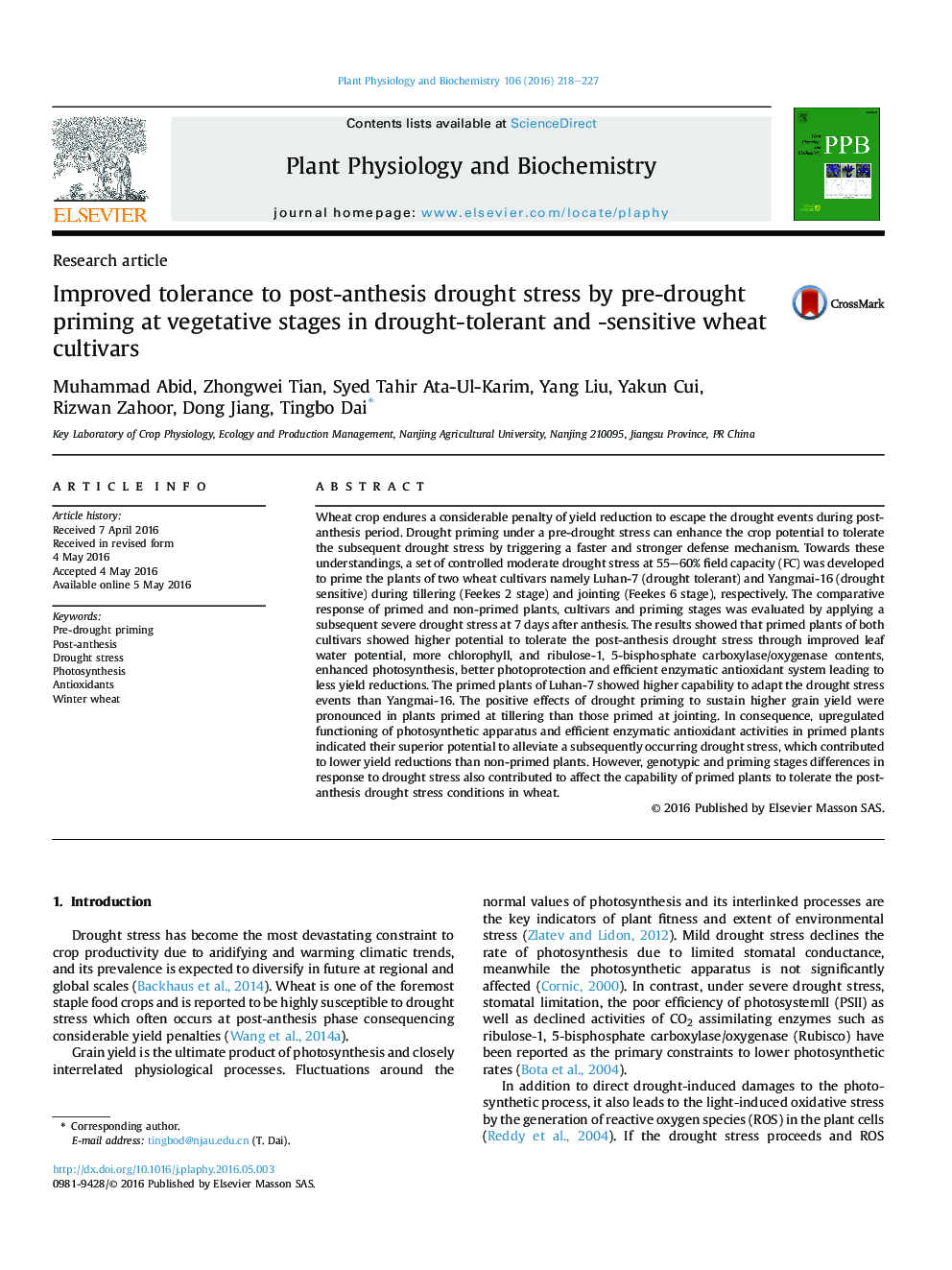| Article ID | Journal | Published Year | Pages | File Type |
|---|---|---|---|---|
| 8353949 | Plant Physiology and Biochemistry | 2016 | 10 Pages |
Abstract
Wheat crop endures a considerable penalty of yield reduction to escape the drought events during post-anthesis period. Drought priming under a pre-drought stress can enhance the crop potential to tolerate the subsequent drought stress by triggering a faster and stronger defense mechanism. Towards these understandings, a set of controlled moderate drought stress at 55-60% field capacity (FC) was developed to prime the plants of two wheat cultivars namely Luhan-7 (drought tolerant) and Yangmai-16 (drought sensitive) during tillering (Feekes 2 stage) and jointing (Feekes 6 stage), respectively. The comparative response of primed and non-primed plants, cultivars and priming stages was evaluated by applying a subsequent severe drought stress at 7 days after anthesis. The results showed that primed plants of both cultivars showed higher potential to tolerate the post-anthesis drought stress through improved leaf water potential, more chlorophyll, and ribulose-1, 5-bisphosphate carboxylase/oxygenase contents, enhanced photosynthesis, better photoprotection and efficient enzymatic antioxidant system leading to less yield reductions. The primed plants of Luhan-7 showed higher capability to adapt the drought stress events than Yangmai-16. The positive effects of drought priming to sustain higher grain yield were pronounced in plants primed at tillering than those primed at jointing. In consequence, upregulated functioning of photosynthetic apparatus and efficient enzymatic antioxidant activities in primed plants indicated their superior potential to alleviate a subsequently occurring drought stress, which contributed to lower yield reductions than non-primed plants. However, genotypic and priming stages differences in response to drought stress also contributed to affect the capability of primed plants to tolerate the post-anthesis drought stress conditions in wheat.
Related Topics
Life Sciences
Agricultural and Biological Sciences
Plant Science
Authors
Muhammad Abid, Zhongwei Tian, Syed Tahir Ata-Ul-Karim, Yang Liu, Yakun Cui, Rizwan Zahoor, Dong Jiang, Tingbo Dai,
